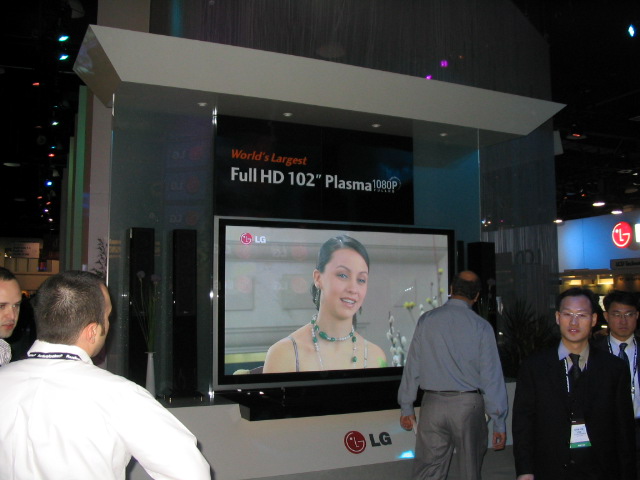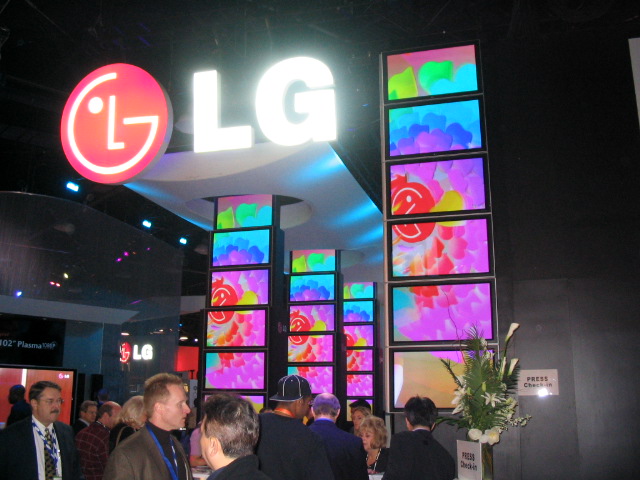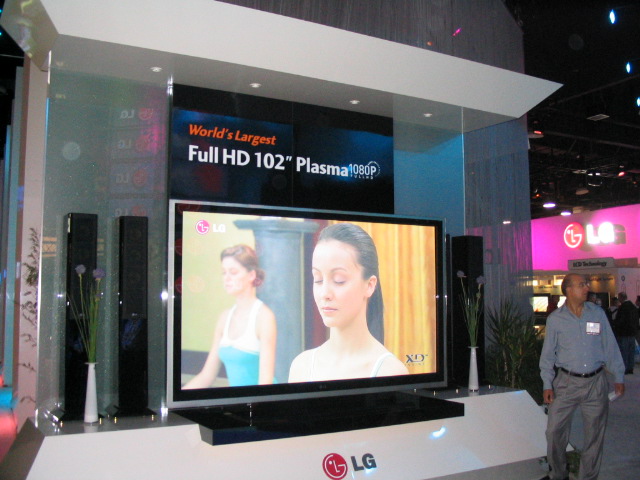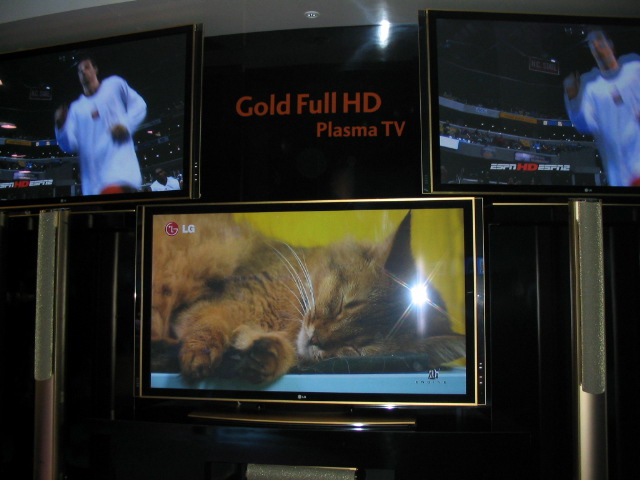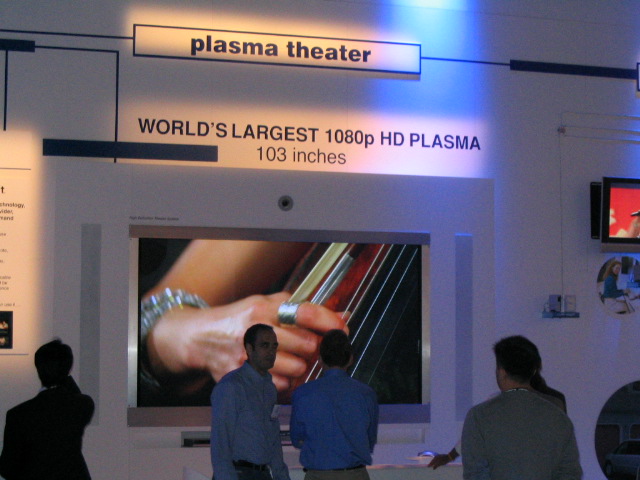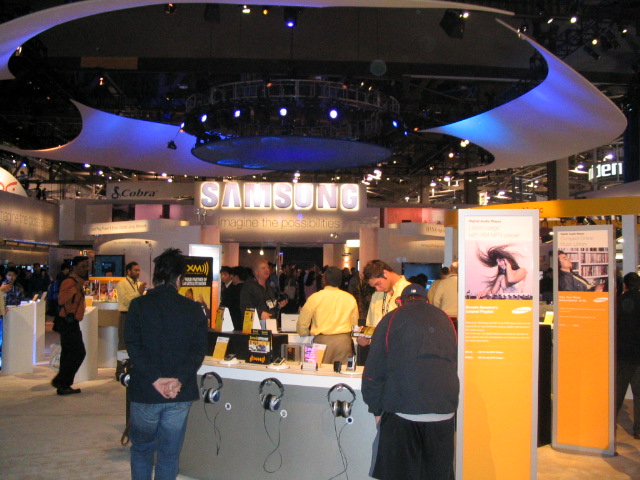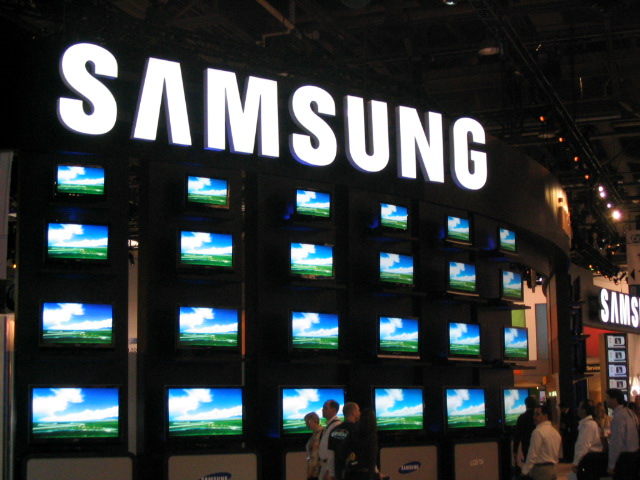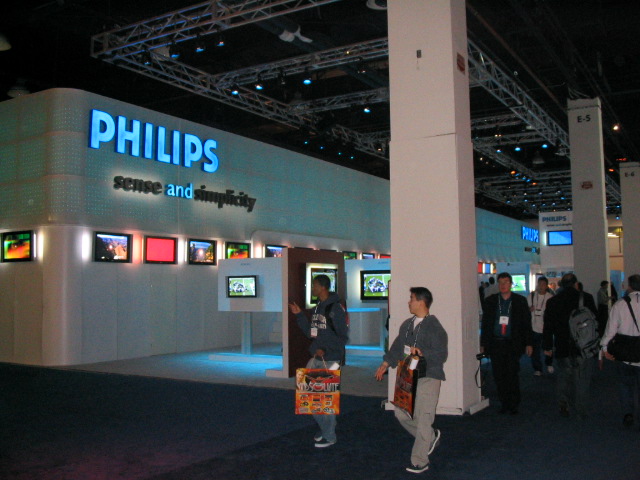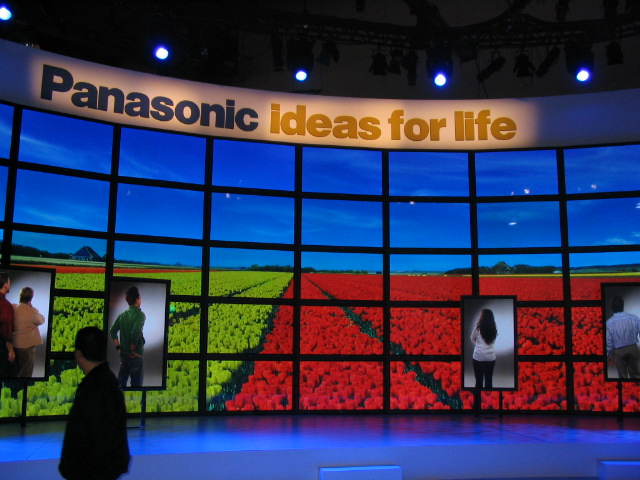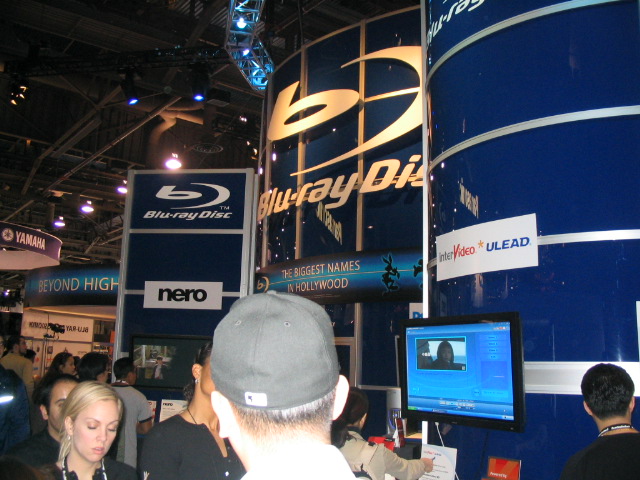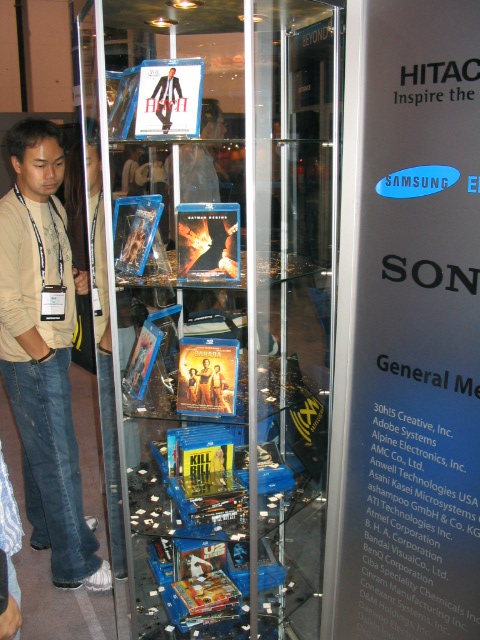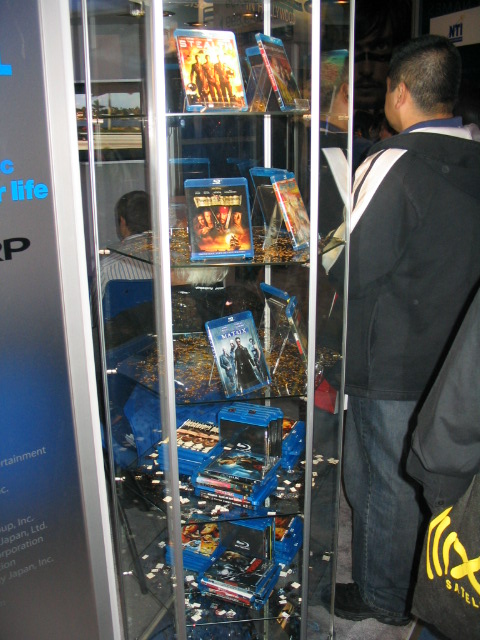 |
|||||||||||||
| Home |
|
Products For Sale |
|
FAQs, Tips, Manuals |
|
Referral List |
|
Photo Gallery |
|
Links |
|
Contact Us |
|
|
||||||||||||
|
Here’s a couple of pix of the over-the-top LG booth. Note the ‘world’s largest’ 102” plasma set.
Samsung, not to be outdone, also showed the ‘world’s largest’ 103” plasma TV... :)
Another massive display by Panasonic. All Panasonic stuff looked good, now can they build a $100.00 DVD player that lasts more than 2 months? (I’ve run through 5 of them in the last year. Luckily they were all under warranty...)
The setup was good. Both plasmas were running the same program loop.
Identical plasma sets, the left one supposedly running 1080p, the right one
should be running a progressive DVD signal, right? WRONG! Upon close
inspection, the regular DVD image looked worse
than it should, the Blu-Ray looked better. When I questioned a rep, he said
that they didn’t have any 1080p content material, so the Blu-Ray was showing
1080i, and the regular DVD was showing 480i video scaled up to 1080i within
the plasma. That’s why I saw all sorts of ringing and less detail than I
should have had the right side set been fed a 480p signal. Try again next
year Pioneer!
My current impression of Blu-Ray
and HD-DVD? It’s great, but no one except the highest quality
display devices will realize a lot of
benefit from it. Any of the older digital projectors and CRT projectors
8” or less do not have the display capacity of true 1080p, so my advice
is to ignore the hype and wait until the
format war of Blu Ray and HD-DVD has settled down. I heard pricing of
$500-1800 USD for current Blu-Ray players. I personally am using 720p
with a good scaler on a 9” CRT, and I love it. Sony Ruby- One item that I do not have pictures of is the new Sony Ruby. This is an SXRD (Silicon X-tal Reflective Display) device that is an LCD-DLP hybrid (called LCOS: Liquid Crystal on Silicon) that promised to outperform all other digital projection devices. I expected Sony to have a large display at their booth of it, so you can imagine my disappointment when the Ruby was there, but it was not set up. I was however told that the Sony Store at Caesar’s Palace had it on display. So of course I went cruising over to the Sony Store. At Caesar’s it is not called the Sony Store, it’s called ‘Sony Style’. I walked into the back of the store and asked to see the Ruby. I was led into a back room, where the sale guy had to call a second sales guy to get it to turn on. I was also told that it was installed 3 days earlier. I inquired as to whether it was ISF calibrated, and then I had to explain what ISF calibration was. So I guess it wasn’t calibrated... :) Upon sitting down on the couch, I noticed that the projector was mounted a good 12” off to one side of the middle of the screen. Not a good start. Overall, the image on this unit was underwhelming to say the least. It was being fed with a 480p component signal from a DVD player, not the best source for this high end set. The color was good, but the brightness was low. I had read that this was not a high output projector like the far more expensive Qualia, but this was only about 800 lumens to me. It was very obvious that this projector was poorly set up, in fact the sales guy did tell me that it was not tweaked at all. However, he also said that the poor picture was due to the low resolution SCREEN, which of course was a blatant untruth. I hope to see a well set up Ruby somewhere here locally so I can really evaluate it. I believe that the Ruby is the best of the digital technologies out there, but I didn’t see that from the Sony Style in Vegas. Note that the far more expensive Sony Qualia was set up right next door to the Ruby, and it looked great… but with no true black levels as I’d seen before.
From what I saw this year at CES (and yes, I missed a number of show items that I really SHOULD have looked at, like the new Toshiba display technology), all digital displays have come a long way from what they were a few years ago. The WOW factor of a good looking flat screen or an image from a 10 lb box is very high. HOWEVER… all digital units are STILL designed to be disposable. Repairs are exceptionally pricy out of warranty, bulb costs for units that require them are expensive, and these units are not designed for long life spans. View any of these units before you buy, the picture quality does vary from set to set, and what looks good on a spec sheet might look bad in person. On lower end units, extreme white and black details suffer. Many low end displays (and some high end ones) looked like actor’s faces had a layer of oil sheen on them, as if they were about to break out in a bad case of acne. Many white area details, like folds or creases in a white shirt were smeared, and all detail was thus lost. To me, CRT still give the best bang for the buck, and has the lowest cost per hour of run time. Complete modular construction, lots of parts and modules available for them and no pesky expensive bulbs to replace make them the best deal out there. But you knew that already, right? :) 1080p right now is overrated. There is no question that a true 1080p signal source will give more details to the image, but considering that only the top of the line CRT projectors and the current digital display devices allow the full resolution that 1080p sources put out, it’s best to hold off on the purchase of these devices for a few more years. Page 1 |
Page 2 |
Page 3 | Page 4 |
Page 5 | Page 6
|
|
||||||||||
© Copyright CurtPalme.com. All Rights Reserved. |

